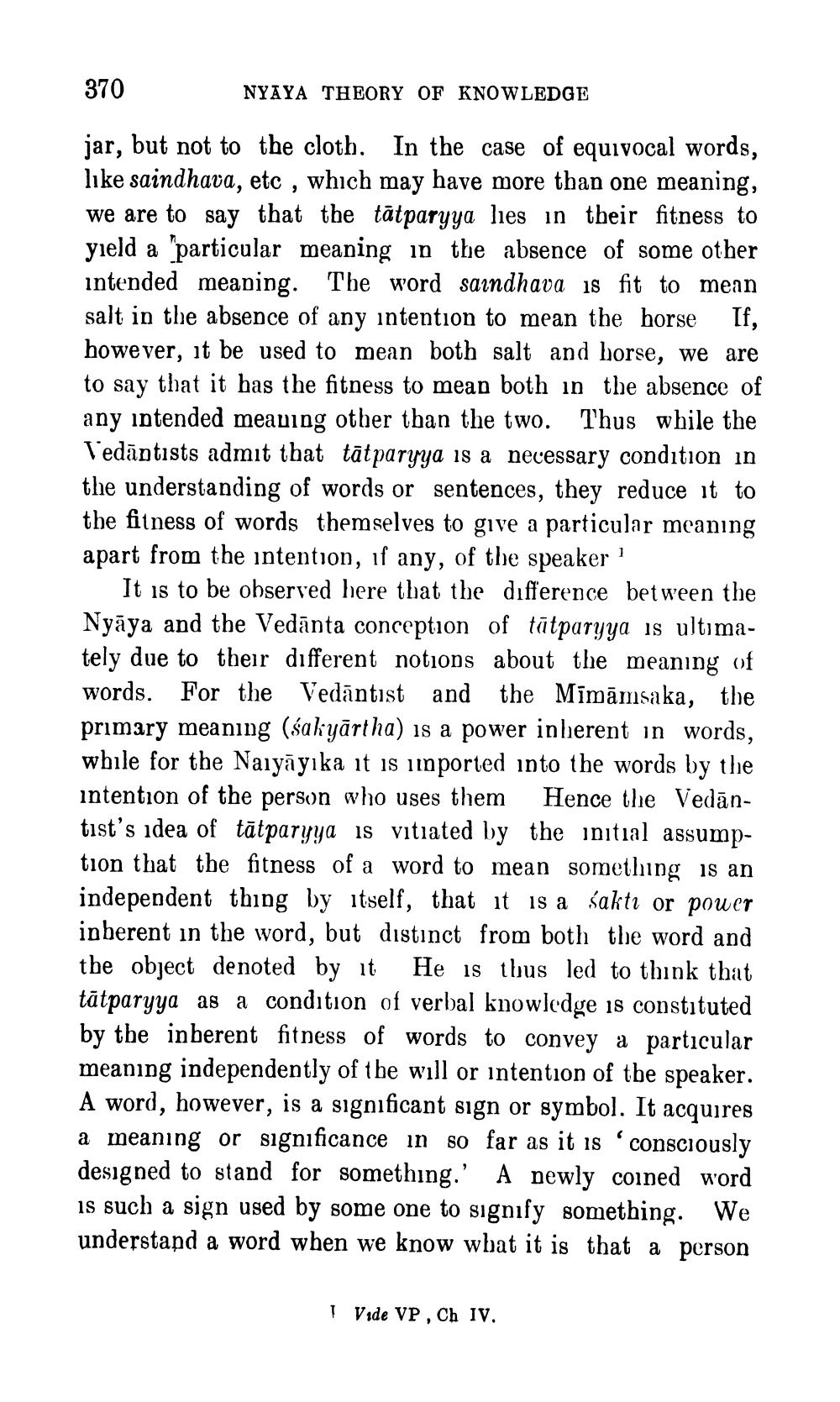________________
370
NYAYA THEORY OF KNOWLEDGE
jar, but not to the cloth. In the case of equivocal words, like saindhava, etc , which may have more than one meaning, we are to say that the tātparyya lies in their fitness to yield a "particular meaning in the absence of some other intended meaning. The word saindhava is fit to mean salt in the absence of any intention to mean the horse [f, however, it be used to mean both salt and horse, we are to say that it has the fitness to mean both in the absence of any intended meaning other than the two. Thus while the Vedāntists admit that tātparyya is a necessary condition in the understanding of words or sentences, they reduce it to the fitness of words themselves to give a particular meaning apart from the intention, if any, of the speaker
It is to be observed here that the difference between the Nyāya and the Vedānta conception of tātparyya is ultimately due to their different notions about the meaning of words. For the Vedāntist and the Mimāmsaka, the primary meaning (sakyārtha) is a power inherent in words, while for the Naiyāyika it is inported into the words by the intention of the person who uses them Hence the Vedāntist's idea of tātparyya is vitiated by the initial assumption that the fitness of a word to mean something is an independent thing by itself, that it is a saktı or power inherent in the word, but distinct from both the word and the object denoted by it He is thus led to think that tātparyya as a condition of verbal knowledge is constituted by the inberent fitness of words to convey a particular meaning independently of the will or intention of the speaker. A word, however, is a significant sign or symbol. It acquires a meaning or significance in so far as it is 'consciously designed to stand for something.' A newly coined word is such a sign used by some one to signify something. We understand a word when we know what it is that a person
I Vide VP , Ch IV.




